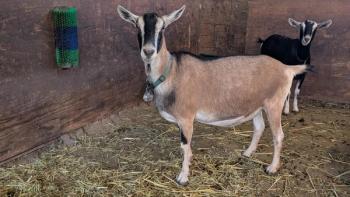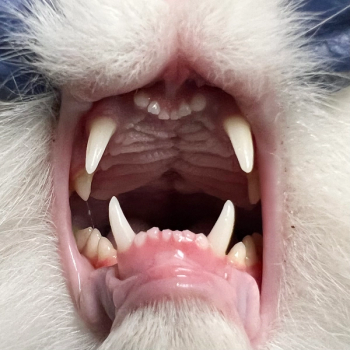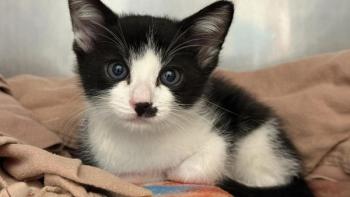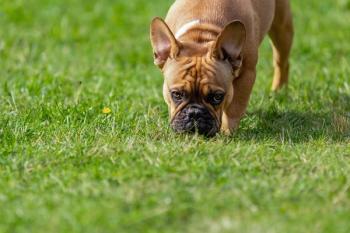
Skills Laboratory: Reconstructive surgery techniques, Part 4: Full-thickness mesh skin grafts
A full-thickness mesh graft is a sheet of skin that includes only the epidermis and the entire dermis and is fenestrated to allow for expansion and drainage.
A full-thickness mesh graft is a sheet of skin that includes only the epidermis and the entire dermis and is fenestrated to allow for expansion and drainage. All subcutaneous tissue is removed from the graft. Full-thickness mesh grafts are indicated to cover defects when skin is not available for local flaps or for moving local tissue or when excessive tension would be created by using such wound closure techniques as placing presutures or an adjustable horizontal mattress suture or making multiple punctate relaxing incisions (Figure 1). They are most commonly used to close mid- and distal-limb defects. Full-thickness mesh grafts are indicated for excision sites or for fresh wounds with well-vascularized tissue—enough vascularization to produce granulation tissue—or a bed of healthy granulation tissue that has started to epithelialize.
Figure 1. Skin stretching or relaxing procedures will be ineffective for wound closure.
PRESURGICAL PREPARATION
A few days before grafting, apply a topical silver sulfadiazine cream or nitrofurazone ointment to reduce bacteria on a contaminated or an infected granulating wound.1,2 Systemic antibiotics may also be indicated for infected wounds. Wounds should be treated until infection is controlled. A healthy bed of granulation tissue with epithelium starting to grow over it from the wound edges is an indication the wound is healthy enough to graft. If granulation tissue is healthy enough to support epithelium, it is healthy enough to support a graft.
The day before grafting, administer a neuroleptanalgesic and use a No. 10 scalpel blade to scrape the wound’s surface of granulation tissue to remove any coagulum on the wound surface. Bandage the wound with mesh gauze coated with gentamicin sulfate antibiotic ointment (not cream). Apply an absorbent secondary wrap and a tertiary adhesive wrap.1 Removing coagulum, applying an antibiotic, and bandaging may help reduce bacterial flora on the wound surface, helping ensure that infection will not interfere with graft healing.1
Dogs and cats have an abundance of loose, well-haired skin on the lower craniolateral thoracic area. This area is ideal for obtaining skin for a graft, with sufficient skin to close the defect after graft harvest. Before surgery, tent the skin on the proposed donor site to ensure that sufficient skin is available for obtaining the graft and for wound closure after graft removal. If closure of the donor site causes tension, you may place walking sutures to relieve the tension.
POSTOPERATIVE CARE
After surgery, cover the grafted wound with a sterile absorbent nonadherent dressing pad with an almost imperceptibly thin coat of gentamicin sulfate ointment. This thin coating does not interfere with fluid absorption from the area, yet it provides antibacterial protection of the graft.1,2 Cover the dressing pad with an absorbent secondary wrap and an outer layer of adhesive tape. Use a splint (e.g. a Mason-meta splint) in the bandage to help immobilize the grafted area, especially if the graft has been placed over or near a joint. The splint is usually needed for the first 10 to 14 days after grafting.
While adequately restraining the patient, change the bandage daily for the first seven days.1,2 A graft may appear quite ischemic for the first two days after placement. Later, it may appear cyanotic and edematous. As the graft heals, it becomes less edematous and cyanotic and the color changes from deep red to pink. As granulation tissue grows up into the mesh holes, drainage decreases. Bandages can be changed less often as drainage decreases: every other day, then every third or fourth day, depending on clinical judgment. By 21 days, bandaging is usually discontinued. Sutures are generally removed seven to 10 days after grafting.
In people, about three weeks after grafting, reinnervation with a pins-and-needles sensation reportedly occurs. It is speculated that this sensation may occur in dogs as well and may be manifested by excessive licking and chewing at the graft after the bandage is removed at three weeks. If an owner reports that a dog is excessively licking a graft after bandage removal at three weeks, I recommend continued bandaging for another week. During the postoperative healing period, restrict exercise—the patient should receive cage rest with periodic excursions during the day for elimination. Limited exercise is particularly important early in the healing process to allow vascular and connective tissue attachments to become established.
POTENTIAL COMPLICATIONS
Infection is uncommon. However, when it does occur, it is characterized by a tenacious exudate rather than serous drainage, and areas of the graft are white and lack normal turgor. In such cases, perform bacterial culture and antimicrobial sensitivity testing. When you change the bandages, remove the exudate by blotting the site gently with a 1:40 dilution of chlorhexidine diacetate or gluconate solution, not scrub. Nonviable segments of the graft will be black or white and not adhered to the wound. Débride these areas. Place a more absorbent surgical sponge coated with gentamicin ointment over the wound, followed by the remainder of the bandage as described above. Change the bandage twice daily until the graft appears healthy and the exudate subsides. When bacterial culture and antimicrobial sensitivity results become available, change the topical antibiotic as needed.
Occasionally, only partial-thickness healing occurs, whereby the deeper part of the dermis revascularizes and heals but the epidermis and superficial dermis are lost. When this occurs, débride the nonviable superficial slough during bandage changes if it is loosely attached to the graft. If slough has not started to detach, delay débriding until the separation has started. Delaying débridement avoids damage to the underlying graft dermis. The healed dermis will epithelialize and provide a wound covering; however, it will have a sparse hair covering due to follicle loss. If a graft is completely lost, treat the wound as an open wound, and allow it to heal by contraction and epithelialization. If healing is insufficient, perform a second graft.
ADVANTAGES AND DISADVANTAGES
The slits in a mesh graft provide flexibility for a graft to conform better to concave and convex surfaces and irregular wound edges. These grafts are more stable because they are immobilized on the wound surface by tacking sutures between the slits, thus helping ensure good vascular and connective tissue attachments. An unmeshed sheet-type graft, which does not have tacking sutures to immobilize the graft to the bed, is more subject to graft movement on the bed, deterring good graft-bed connections. In addition, mesh openings allow blood, serum, and exudate to drain from under the graft. This drainage allows the graft to contact the wound for revascularization. Granulation tissue that grows into the mesh openings helps immobilize the graft and provides vessels that grow into the cut edges of the dermis for revascularization. Because a cat’s skin is thinner and revascularlizes more quickly than a dog’s, a graft in a cat will likely heal sooner than in a dog.
A disadvantage of mesh grafts is their poor cosmetic appearance early in the healing process; however, as healing progresses, the slits become less noticeable as they get smaller and hair regrows on the graft. Growth of hair on a graft is variable and unpredictable. Some grafts have full regrowth of hair while others will have sparse hair regrowth, especially with partial-thickness graft healing.
ACKNOWLEDGMENT
Thank you to Lori Lind, RVT, Gladstone Animal Clinic, Gladstone, Mo., for her assistance during the demonstration.
Steven F. Swaim, DVM, MS
Professor emeritus
Scott-Ritchey Research Center
Department of Clinical Sciences
College of Veterinary Medicine
Auburn University
Auburn University, AL 36849
REFERENCES
1. Swaim SF, Henderson RA. Small animal wound management. 2nd ed. Baltimore, Md: Williams & Wilkins, 1997;313-318.
2. Swaim SF. Skin grafts. In: Slatter D., ed. Textbook of small animal surgery. 3rd ed. Philadelphia, Pa.: Saunders, 2003;327-329.
Video
|
Step 1>
Introduction
Step 1
Step 2A
Step 2B
Step 2C
Step 3A
Step 3B
Step 5A
Step 5B
Step 4
Step 6A
Step 6B
Video
Newsletter
From exam room tips to practice management insights, get trusted veterinary news delivered straight to your inbox—subscribe to dvm360.






